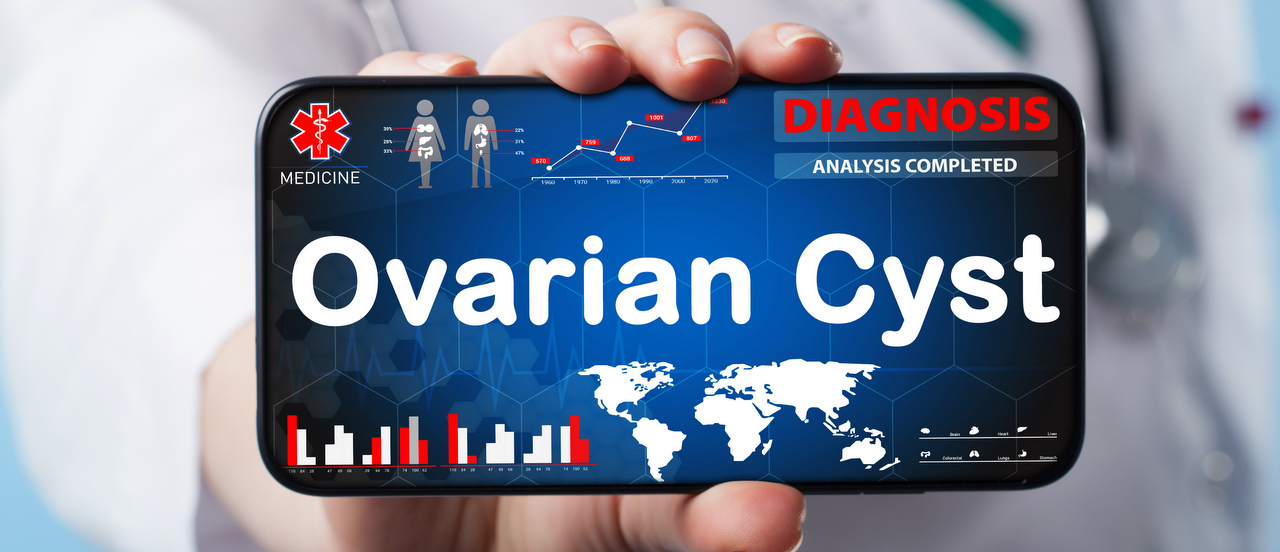Ovarian cysts are quite common. In fact, most women will experience a cyst on her ovaries at least once during her lifetime. You may have one right now, with no complications, or you could suffer from some uncomfortable symptoms.
What exactly is an ovarian cyst?
- a woman has two ovaries, one on either side of the uterus, which allow for the development and maturation of eggs/ova
- during a woman’s child-bearing years, ova are released every month, during the menstrual cycle
- an ovarian cyst is a fluid-filled sac that can develop on a woman’s ovary
- an ovarian cyst can form on one or both ovaries; they can be single or multiple
- most are harmless and will disappear on their own over a few months
Are there different types of ovarian cysts?
Most ovarian cysts are non-cancerous (benign), with only a small number being cancerous (malignant).
a) Functional ovarian cysts:
- these develop as part of the menstrual cycle
- the most common type, often painless, are harmless and disappear on their own
- most commonly seen in women during their child-bearing years (pre-menopausal)
- they form due to a minor problem in the menstrual cycle
- examples include: follicular cysts, corpus luteum cysts and haemorrhagic cysts
b) Pathological ovarian cysts:
- these cysts occur due to abnormal cell growth and can lead to cancer (malignant)
- these occur less commonly
- some examples can include dermoid cysts, cystadenomas
- Some cysts can be due to an underlying condition such as:
- Endometriosis (where tissue that usually occurs inside the uterus, develops on the surface of the ovaries, forming a cyst
- PCOS/Polycystic ovary syndrome (where the ovaries contain a large number of small cysts)
What are some of the symptoms of an ovarian cyst?
Remember that most ovarian cysts do not cause symptoms unless the cyst is large, tears or bursts (causing intense pain and internal bleeding), or undergoes torsion (twists and cuts off the ovary’s blood supply).
- pain in the lower abdomen or pelvic area (ranging from sharp, severe pain to a dull, heavy ache)
- pain felt in the lower back and/or thighs
- a feeling of being bloated
- nausea and vomiting
- pain in association to sexual intercourse
- pain before and during one’s menstrual cycle
- difficulty falling pregnant
- a feeling of needing to urinate frequently
- periods that are either heavy, irregular or lighter in flow than normal
- difficulty or pain whilst passing stool
How does a doctor diagnose an ovarian cyst?
- most ovarian cysts are detected by an ultrasound/sonar (either performed on the abdomen, or with a probe placed inside the vaginal canal)
- a doctor may also need to perform a pregnancy test to detect/exclude a pregnancy
- in some cases, blood tests such as hormone levels and tumour marker levels may be requested
- in certain cases, a CT or MRI scan may be performed
What can be done about an ovarian cyst?
The management of an ovarian cyst depends on:
- the size of the cyst
- whether the cyst is simple or complex in appearance
- the type of symptoms the cyst is causing
- if the cyst is complicated (i.e. if it has ruptured or has undergone torsion)
- whether the woman is menopausal or not
- if there is an underlying medical condition present (i.e. endometriosis or PCOS)
- if the cyst may possibly be cancerous (malignant) or not
- Small cysts in pre-menopausal women are often followed-up with ultrasound over a few months and many will regress without intervention.
- Larger, complicated cysts, or those with a risk of cancer/malignancy may be surgically removed (either via laparoscopic surgery, or via a laparotomy).
- Underlying medical conditions, such as PCOS or endometriosis, should be treated with the appropriate medication (and/or surgery).

